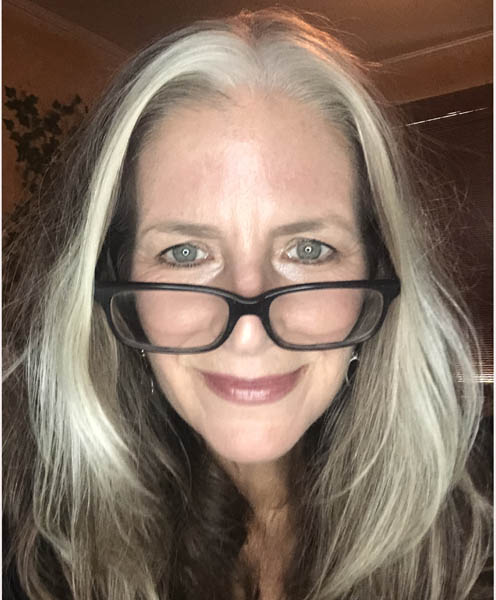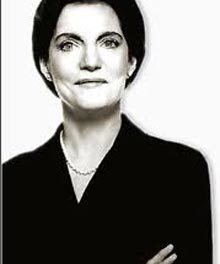 Last night I dreamt of Sewanee.
Last night I dreamt of Sewanee.
It was an intensely vivid dream, and one of those rare ones that remain so upon waking, leaving you with visions burned into your eyelids and emotions stuck in your throat.
In my dream, it was move-in day of my senior year at this small liberal arts college atop the Cumberland Plateau in Tennessee. All my besties were there, looking just as they did back then. Rosy cheeks, Ray Bans, feathered hair. Perfectly 1987.
These dream girls were the friends I actually lived with that year, and most every year of college. Only in my dream, that wasn’t going to happen. Upon my arrival, I learned we were splitting up. D and W would be living off-campus at a relative’s house, while A, M, and V were also pursuing alternative arrangements. This was the first I’d heard of these plans. Flabbergasted, I was left to move into the dorm we’d all chosen together just a few months earlier… alone, with a bunch of strangers. And I couldn’t find the dorm.
Hurt, confused, and panicky, I found myself running along behind a row of Gothic buildings – this was Sewanee, but not exactly – nervously trying to avoid a deep, vertiginous ravine invisible from the street and rimmed with snow. In my dream, the snow didn’t seem so strange – nothing is strange in dreams, only later – even though it was late summer, and the campus was otherwise lush with greenery.
Eventually I ran into a stadium – maybe Sewanee’s football stadium? – where Radney Foster was playing guitar and singing an eerie dirge, with a couple of other musicians. (FYI: Foster is a country music artist who actually did graduate from Sewanee; though we were not there at the same time, and I only know him vaguely, through Facebook.) Students seemed to be milling around, confused – like me – searching for their friends. It was oddly dark in the stadium, with just a spotlight on the musicians, despite being broad daylight. Weird, right? But I don’t know how else to describe it.
Here’s the main thing: In my dream, Sewanee’s famously beautiful mountain campus was still beautiful, but there was this unnatural, almost sinister shadow over everything. Sort of like an inversion of the Sewanee I know in “real life.” An evil twin. A photographic negative.
Even as I write, the dream is slipping away. The images. The feelings. They’re all evaporating, and honestly, I’m glad. Because this dream left me shaken and unsettled.
I feel that way a lot lately. Shaken and unsettled. Like all the things I’ve known and loved – my comfort zones, my sacred places – are being exposed as frauds . . . or, redefined against my will? I assume the Sewanee dream had been flowering in my subconscious for a while, as my beloved alma mater has been coming to terms with its ties to the Confederate past. I’m involved in several online alumni groups – and follow the college newspaper – and it’s clear that the university is devoting a great deal of time and psychic energy to this racial reckoning. Which makes it no different from the rest of the country.
As I wrote in an earlier column, the past year has been a rude awakening for many folks in my generation – I’m an early GenX’er – who don’t quite remember the Civil Rights Movement of the ‘60s, but who grew up in its remarkable aftermath and, frankly, always took its success for granted. My Boomer friends – in their 60s and 70s – seem right in their zone with today’s social justice movement; they’re natural revolutionaries who changed the world in their youth and never got over that heady experience. (Who would?) My millennial friends seem “all in,” too, having inherited a host of problems that weren’t on my radar as a young person – climate change, for instance – along with their Boomer parents’ passion for protest. It also occurs to me that these younger Americans – including my daughter’s Generation Z – have no experiential sense of just how far this country has come in a very short time. All they know is that we’re not there yet.
And they’re right; we’re not. Let’s just stipulate that. My great concern, though – and I am literally losing sleep over it – is that we’ve been moving in the right direction for a very long time, and now I’m not so sure anymore. For the first time in my lifetime– after decades and decades of steady progress – it feels like we’re going backwards.
Many will dispute this notion, arguing that the country is currently engaged in a high profile war on systemic racism. It’s all over the media! All the important people are involved! The president! The professors! The movie stars! The sports heroes! Even the wealthy corporate moguls are lecturing average citizens about their white privilege. What could possibly go wrong?
Oh, my sweet summer child.
I am on record as being highly skeptical of our current “moment,” driven by the antiracist teachings of professor Ibram X. Kendi (How to Be Antiracist), corporate diversity guru Robin DiAngelo (White Fragility), and other critical race theorists who dominate the conversation. To me, it seems high on showiness and low on substance. I’m a “by their fruits, ye shall know them” kinda person, and the fruits I’m seeing out there increasingly include anger, paranoia, resentment, distrust, defensiveness, guilt, fear, and a host of other emotions that seem unlikely to lead us into a bright future of racial harmony.
Reviewing DiAngelo’s White Fragility for The Atlantic, Columbia linguistics professor John McWhorter channels my own thoughts, writing, “Her assumption that all people have a racist bias is reasonable – science has demonstrated it. The problem is what DiAngelo thinks must follow as the result of it. . . . She does not see fit to address why all of this agonizing soul-searching is necessary to forging change in society. One might ask just how a people can be poised for making change when they have been taught that pretty much anything they say or think is racist and thus antithetical to the good. What end does all this self-mortification serve?”
“In 2020—as opposed to 1920—I neither need nor want anyone to muse on how whiteness privileges them over me,” continues McWhorter, who happens to be Black. “Nor do I need wider society to undergo teachings in how to be exquisitely sensitive about my feelings. I see no connection between DiAngelo’s brand of reeducation and vigorous, constructive activism in the real world on issues of import to the Black community.”
Preach.
Lately, there’s this image that’s haunting me; I guess you might call it a metaphor. I need to put it down on paper, if only to get it out of my head.
Envision a deep, festering wound somewhere on your body. Because it’s very deep – and festering – you must treat that wound before it can heal properly. You have to clean it, disinfect it, maybe even stitch it up and bandage it. It’s not easy, but if you treat the wound with care – and give it time – chances are very good that it will heal. When the wound is nearly healed, a scab will form, and it will begin to itch. Suddenly, you’re obsessed with the wound again, because even though it’s substantially improved, it’s not entirely healed, and now there’s this itchy scab to contend with. Maybe you begin to scratch that scab, and even pick at it. You hate the scab; it’s ugly and aggravating, and it’s the last vestige of the wound. You want it gone! But here’s the catch: If you scratch and pick too hard, you’ll rip off the scab – which, though irritating, is actually a sign of healing – and you’ll exacerbate the wound until it becomes infected all over again.
Human societies are fragile. So are human psyches. We’re treating our national wound – I can’t remember a time when we weren’t – but are we really helping it heal? I wonder.








